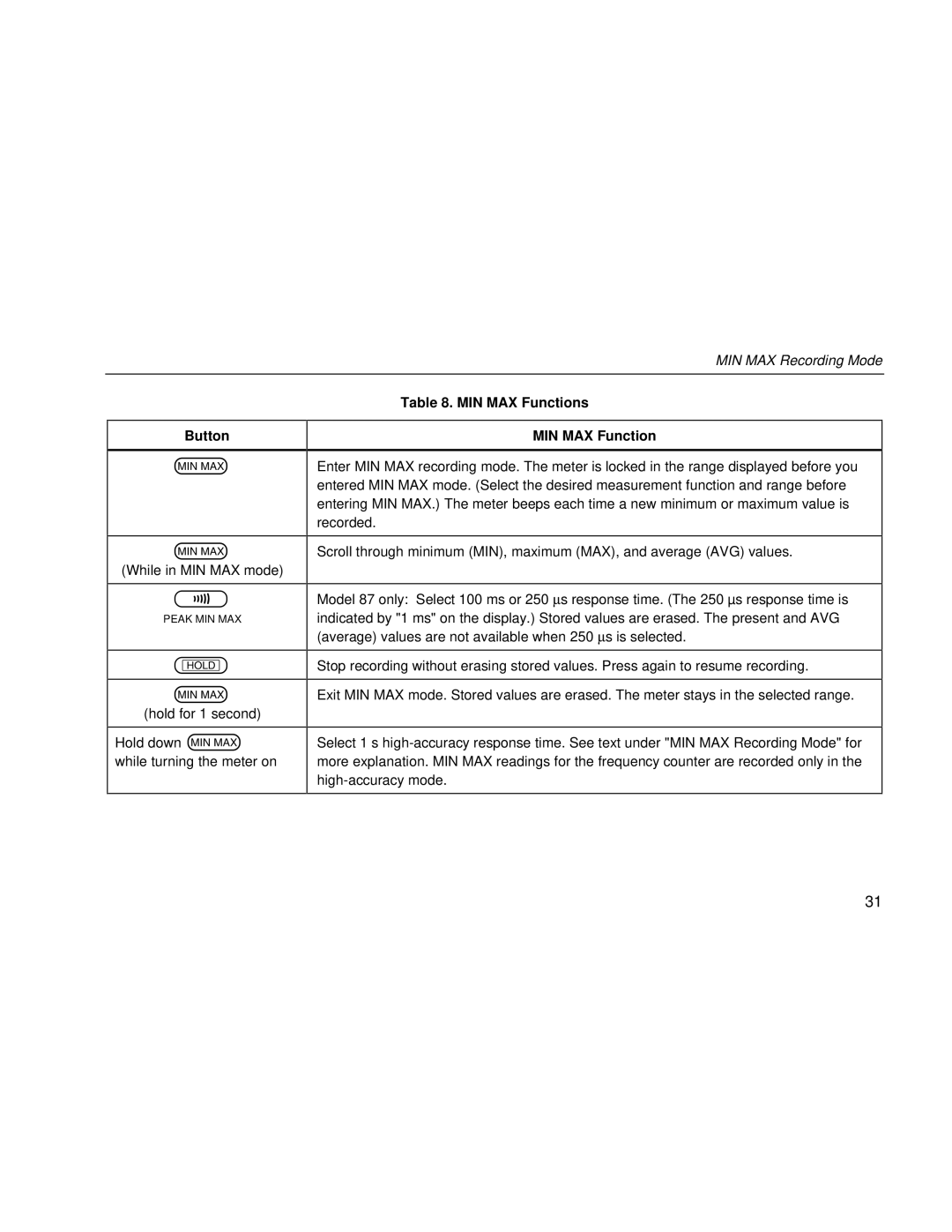80 Series III specifications
The Fluke 80 Series III digital multimeters are renowned for their robust engineering, precision, and versatility, making them a staple in the toolkit of electricians, engineers, and technicians. Launched by Fluke Corporation, a leading manufacturer of electronic test tools, the 80 Series III has set a benchmark in the multimeter industry for its reliability and performance.One of the standout features of the Fluke 80 Series III is its wide measurement capabilities. The device can accurately measure AC and DC voltage, DC current, resistance, frequency, and capacitance. This comprehensive feature set allows users to tackle a variety of tasks, from simple household electrical checks to complex industrial applications. The meter's high input impedance prevents loading effects on circuits, ensuring accurate readings, especially in sensitive electronic applications.
Fluke's proprietary True-RMS technology is another defining characteristic of the 80 Series III. This technology ensures that the multimeter provides accurate readings for both non-linear loads and distorted waveforms, which are common in many modern electrical systems. This capability is particularly valuable in diagnosing issues in variable frequency drives, inverters, and other electronic systems that do not present traditional sinusoidal waveforms.
Durability is a key factor in the design of the Fluke 80 Series III. The multimeter is housed in a rugged, impact-resistant case that can withstand the rigors of fieldwork. It features a built-in protective holster with a probe holder, enhancing portability while safeguarding the device against drops and bumps. Furthermore, the 80 Series III boasts an IP67 rating for dust and water resistance, ensuring reliable performance in adverse conditions.
User-friendliness is also a significant aspect of the Fluke 80 Series III. The large, easy-to-read display, combined with intuitive controls, allows users to navigate its functions with ease. The multimeter features a backlight, enabling use in dimly lit environments, while the hold function ensures that readings can be captured and displayed even after disconnecting the probes.
In addition to these features, the Fluke 80 Series III offers various models to cater to specific needs, such as the 87V for highly accurate measurements in industrial environments and the 86V for temperature measurements with added thermocouple support. Each model maintains the high standards of quality and performance that Fluke is known for.
In summary, the Fluke 80 Series III digital multimeters combine advanced features, high accuracy, and rugged durability, making them indispensable tools for professionals who require reliable performance in challenging environments. Whether for routine maintenance or complex troubleshooting, the 80 Series III offers everything necessary to meet the demands of today’s electrical tasks.

